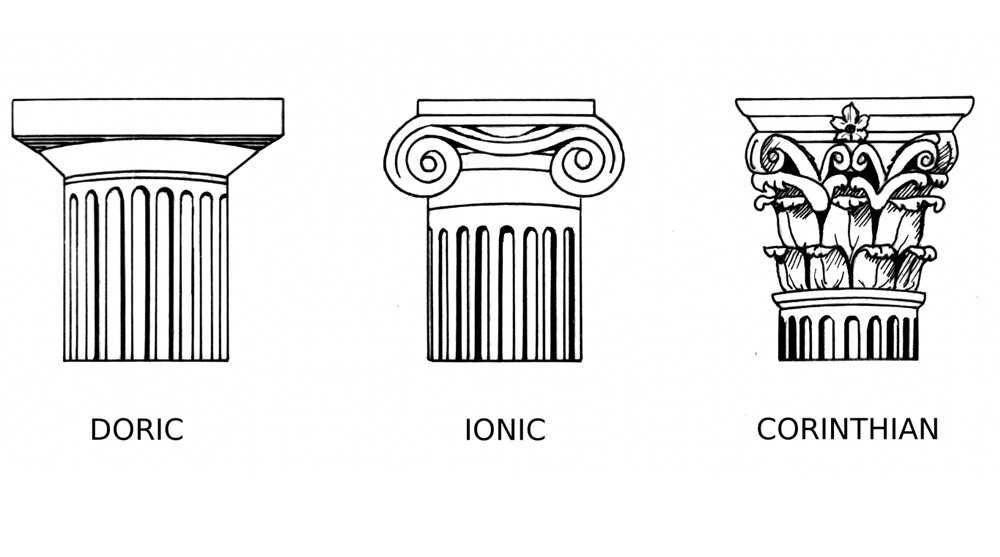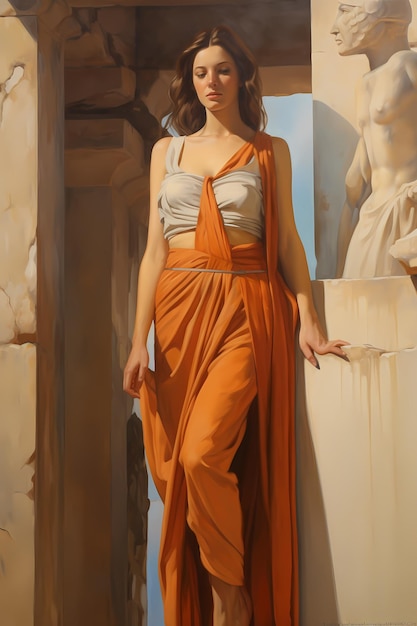Greek Architecture: Unveiling the Most Decorative Order

In the annals of architectural history, Greek architecture stands as a monumental testament to the ingenuity and aesthetic sense of ancient civilizations. Among the classical orders— Doric, Ionic, and Corinthian—the latter, or the Corinthian order, is often considered the most decorative and ornate. This blog post explores the intricate details and historical significance of the Corinthian order, highlighting why it is celebrated for its lavish decoration.
What is the Corinthian Order?

The Corinthian order, originating in the late Classical period around the 5th century BC, became more prevalent during the Hellenistic and Roman periods. Here's what sets it apart:
- Capital: The most distinctive feature is its capital, characterized by acanthus leaves arranged in multiple layers, often including small spirals (volutes) and occasionally decorated with rosettes or animal figures.
- Column Shaft: Unlike the Doric order, the Corinthian columns often feature slender, fluted shafts, which can be slightly tapering or without entasis.
- Base: Corinthian columns usually rest on a base, unlike the Doric order where the column sits directly on the stylobate.
The Origin Story

The origins of the Corinthian order are both mythic and rooted in practicality. Here are two prevailing stories:
- Mythological: According to Vitruvius, the architect Callimachus found the inspiration for the Corinthian capital from the grave of a young Corinthian girl. The story goes that a basket left over her tomb was covered with a tile, and an acanthus plant grew around it, entwining its leaves in a decorative pattern.
- Practical Development: More pragmatically, architects might have added the intricate capitals to add visual height to buildings or to cover joints where architectural members met.
💡 Note: The Corinthian order's detailed capital provides not just aesthetic appeal but also serves to break the monotony of the entablature and give the appearance of a more open space between columns.
Notable Examples of Corinthian Architecture

| Structure | Location | Description |
|---|---|---|
| The Pantheon | Rome, Italy | Featuring an iconic Corinthian portico with massive columns. |
| Temple of Olympian Zeus | Athens, Greece | A masterpiece with Corinthian columns, originally constructed in the 6th century BC. |
| Temple of Vesta | Tivoli, Italy | Shows early use of Corinthian order with multiple tiers of acanthus leaves on capitals. |

Evolution of Corinthian Style

Over time, the Corinthian order evolved, notably during:
- Roman Period: Romans used the Corinthian order with even more freedom, adding to its decorative potential with intricate molding, floral designs, and spiral volutes.
- Renaissance and Neoclassicism: Artists and architects like Palladio in the Renaissance rediscovered and redefined the Corinthian order, introducing variations and adaptations to suit contemporary tastes.
Symbolism in Corinthian Architecture

The richness of Corinthian ornamentation often carried symbolic meanings:
- Acanthus Leaves: They symbolize regeneration and immortality, suggesting a connection with nature and fertility.
- Rosettes: Often included in Corinthian capitals, they symbolize the sun and the wheel of time.
As we delve into the intricacies of the Corinthian order, it becomes evident that its beauty lies not only in its visual complexity but also in the layers of meaning it conveys, from myth to practicality, from ancient times to contemporary designs.
Wrapping up our exploration, we can appreciate the Corinthian order as more than just an architectural style. It is a vivid link to the past, an enduring symbol of human creativity, and a profound example of how art can express cultural values and aesthetics. The Corinthian order, with its exquisite detail, continues to inspire and influence architectural endeavors around the globe.
Why is the Corinthian order considered the most decorative?

+
The Corinthian order is known for its ornate capital adorned with acanthus leaves and intricate designs, making it the most decorative of the classical orders due to its lavish use of ornamentation.
Can Corinthian columns be seen in modern buildings?

+
Yes, many buildings, especially those designed in the neoclassical or neoclassicism-inspired styles, incorporate Corinthian columns or their derivatives to evoke a sense of classical grandeur and elegance.
What makes Corinthian capitals unique compared to other orders?

+
Their distinctive acanthus leaf design, often combined with volutes and rosettes, is what sets Corinthian capitals apart, providing a visual feast of floral motifs unmatched by other orders.



